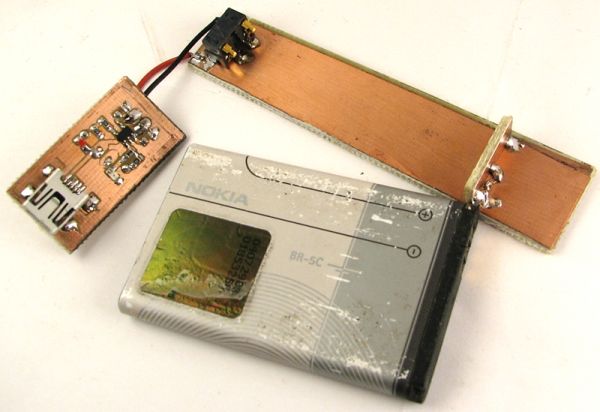For a long time I wanted to enter the 21st century by stopping using NiCad or NiMH batteries and upgrading to Lithium accumulators as they provide more power per volume and are cool in general. Constant flow of obsolete cell phones provides a nice source of reasonably high-performance batteries for free – I felt compelled to tap into this resource for my battery operated projects.
Well, there are a couple of issues you have to take care of when moving to Li-ion or LiPoly:
- you have to charge them in a particular specific way they like
- you can’t discharge them below a certain threshold
- oh, yeah, did I mention they blow up violently if you screw up?
What’s nice about cell phone batteries is that they usually come with a protection circuitry that protects them when they are overdischarged and short-circuited. Once we tried to blow up a cell phone battery by shorting it, connecting to external power supply in proper polarity, then in reverse polarity, then directly to 240V – the sucker just didn’t blow up! This is just how good protection circuit on cell phone batteries is.
Ok, enough of this retarded shit. I needed a proper way to charge batteries, and I’ve chosen USB from a computer as the primary power source since those are ubiquitous. So, to get the job done I chose to test three (essentially two) popular Li-ion charging ICs: MAX1551, MAX1555 and MCP73831.
There are loads of the charger designs based on these ICs on the net, but I couldn’t find one that would meet my requirements:
- made in Eagle
- DIY toner transfer friendly
- charging/finished indication
- jumper/resistor selectable charging current
- optional USB connector
For more detail: Open source Lithium battery charger modules

